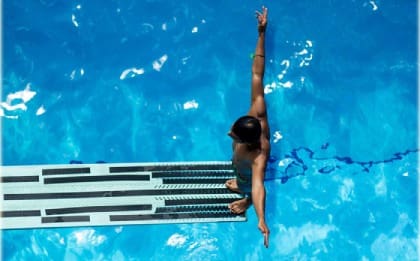
Dive Into the World of Swimming: From Swim Clubs to Water Safety Lessons
Introduction
Swimming is an invaluable skill that offers numerous benefits, from physical fitness to mental well-being. Whether you’re a parent looking to enroll your child in swimming classes or an adult wanting to learn to swim, there’s a wealth of opportunities available. This blog will explore the various aspects of swimming, including swim clubs, elite swim teams, water safety lessons, and more.
Swim Clubs: Building Foundations
Swim clubs are the heart of the swimming community. They provide structured environments where swimmers of all ages can develop their skills, meet new friends, and stay active.
Benefits of Joining a Swim Club:
- Structured Training Programs: Swim clubs offer regular training sessions designed to improve technique, stamina, and overall swimming performance.
- Expert Coaching: Qualified coaches provide professional guidance, ensuring swimmers learn proper techniques and improve safely.
- Community and Camaraderie: Being part of a swim club fosters a sense of community and belonging, making the swimming experience enjoyable and socially enriching.
Elite Swim Teams: Pursuing Excellence
For those with competitive aspirations, elite swim teams offer an avenue to hone skills and compete at higher levels. These teams are typically composed of swimmers who show exceptional talent and dedication to the sport.
Features of Elite Swim Teams:
- Intensive Training Regimens: Elite teams focus on rigorous training schedules that include advanced techniques, strength conditioning, and mental preparation.
- Competitive Opportunities: Swimmers regularly participate in local, national, and international competitions, gaining valuable experience and exposure.
- Personalized Coaching: Coaches provide individualized training plans to meet each swimmer’s specific needs and goals, pushing them to reach their full potential.
Water Safety Lessons: Essential Skills for All
Water safety is a critical aspect of swimming education. Water safety lessons teach individuals how to stay safe in and around water, a vital skill for everyone, especially children.
Key Components of Water Safety Lessons:
- Basic Swimming Skills: Ensuring individuals can perform basic strokes and float, which are essential for survival.
- Safety Techniques: Teaching how to respond in emergency situations, such as recognizing drowning signs and performing basic rescue techniques.
- Awareness and Education: Instilling an understanding of water hazards and how to avoid them, fostering a respect for water environments.
Learn to Swim: Starting the Journey
Learning to swim is a significant milestone, whether for children or adults. Structured swimming classes provide a safe and supportive environment to learn this essential skill.
Advantages of Learn to Swim Programs:
- Progressive Learning: Lessons are designed to progress from basic to more advanced skills, allowing swimmers to build confidence at their own pace.
- Certified Instructors: Qualified instructors ensure that students learn proper techniques from the beginning, reducing the risk of developing bad habits.
- Fun and Engaging: Swimming classes often incorporate games and activities to make learning enjoyable and engaging, especially for young children.
Swimming Classes: Catering to All Ages and Skill Levels
Swimming classes are available for all age groups, from infants to adults. These classes are tailored to meet the needs of different skill levels, ensuring that everyone can benefit from learning to swim.
Types of Swimming Classes:
- Infant and Toddler Classes: Focus on water acclimation, basic floating, and safety skills, often involving parents in the water.
- Children’s Swimming Classes: Progressive lessons that teach fundamental strokes, water safety, and build endurance.
- Adult Swimming Classes: Designed for beginners learning to swim for the first time or for those looking to improve their technique and fitness through swimming.
